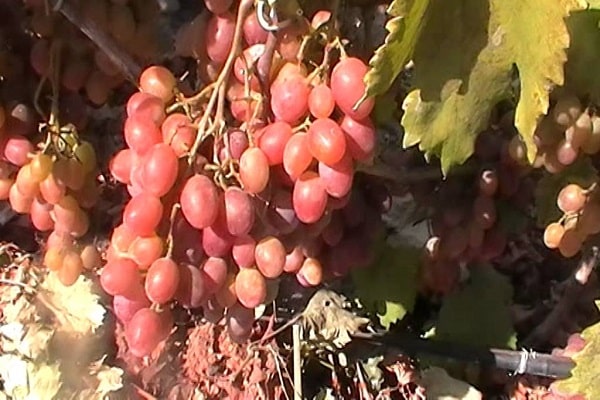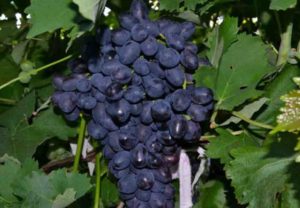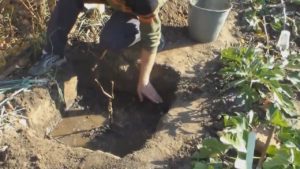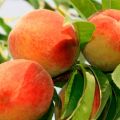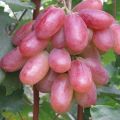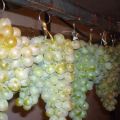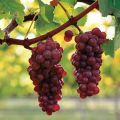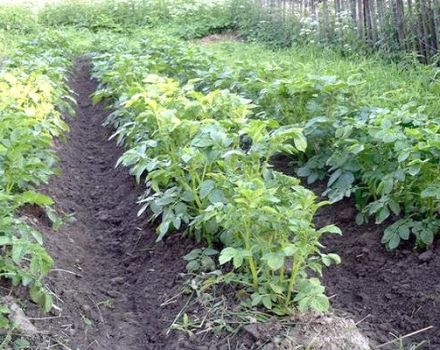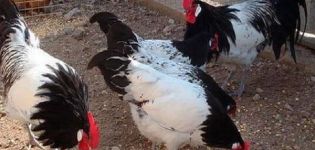Description and characteristics of the Ruby Jubilee grape variety, cultivation and care
For a long time, grapes have been cultivated not only by professional winemakers, but also by amateur gardeners. One of the most popular varieties among summer residents is a hybrid of Ruby Jubilee grapes. The variety is unpretentious in cultivation and gives a rich harvest all year round.
Description of grapes Ruby Jubilee
Before choosing a grape seedling, attention is paid to studying the main characteristics of the bush. First of all, attention is paid to the characteristics of the bush, selection selection, the advantages and disadvantages of the hybrid.
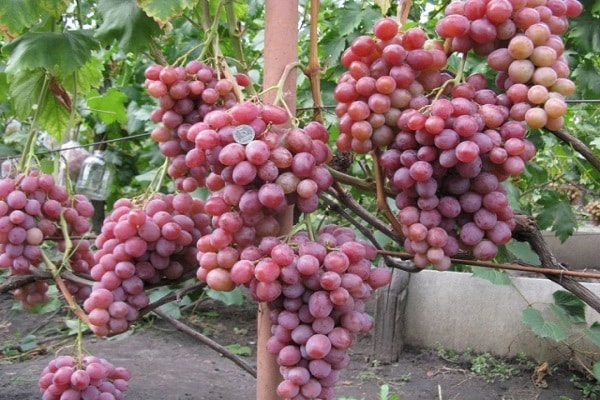
Selection selection
The selection selection of the Rubinovy Yubiley variety was carried out by an amateur breeder Krainov V.N. The hybrid belongs to varieties with an early ripening of the crop. The first ripe berries on the bushes are found 100-115 days after the ovaries appear on the plant.
Description of the bush
Saplings in a new place quickly take root after planting. The bushes are medium in size. The yield is high, the collection of ripe bunches falls on the second decade of August. Pollination can take place even in rainy weather.
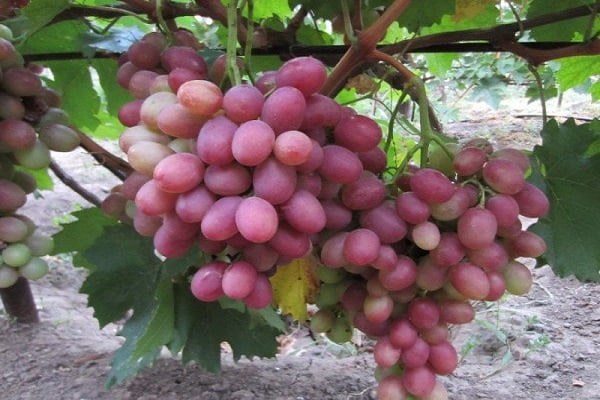
The grapes are large. On average, the bunch weighs from 500 to 800 g. The bunch is cylindrical in shape. Skin from pale pink to deep burgundy, dense, not damaged during transportation. The pulp is of the same shade, juicy and sugary with a nutmeg flavor. One grape weighs on average 12 g.
Advantages and disadvantages
The advantages of the Ruby Jubilee grape variety include:
- High productivity.
- Early ripening of bunches.
- Grape leaves are suitable for making dolma.
- Berry flavor.
- Storage duration.
- Long distance transportability.
- Saplings quickly take root in a new place.
No significant deficiencies were found in the Ruby Jubilee hybrid.
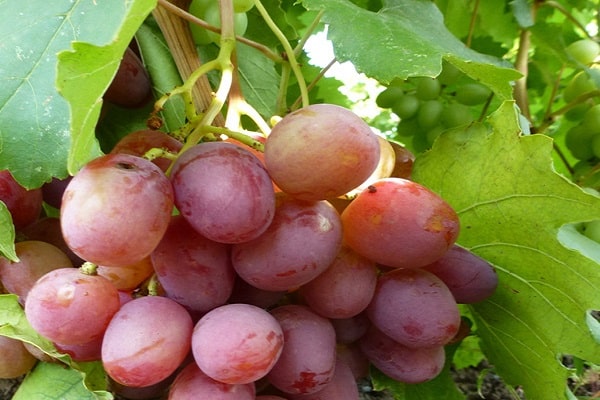
Characteristics of the variety
The advantage of the hybrid is that the bushes have immunity to many agricultural diseases. The grapes are not frost-hardy, and in case of severe frosts, the core can freeze. Therefore, for the winter, the vine is covered with burlap or spruce branches.
Grapes contain a large number of nutrients and antioxidants, which are necessary for the body and help to cope with many diseases.
Planting seedlings
Planting young seedlings in a permanent place is a crucial stage, during which the foundation is laid not only for the harvest, but also for the plant's immunity.
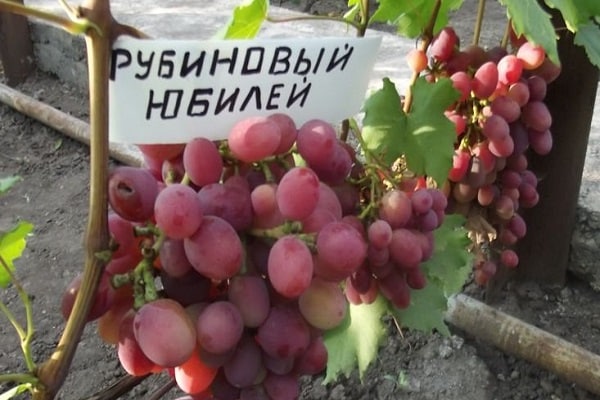
Preparing the landing site
For planting, open sunny areas are chosen. Since the grapes belong to the southern plants, where there is a lot of sunlight and heat, the bushes grow very poorly in the shade and practically do not produce a crop.
In addition, it is important that the site is protected from the wind. The best option for planting will be the walls of the house on the south side. Before planting, it is worth retreating 1 m from the wall. The grapes prefers to grow on loamy or sandy loam soils.

Preparing the soil
Stages of preparing a site for planting grape seedlings:
- Dig a hole to a depth of 80 cm.
- Fill the bottom with shallow drainage.
- Then mix the topsoil with manure and mineral fertilizers for growth and fill the hole with the resulting soil mixture.
- Leave space for 1-2 weeks.
If necessary, the soil is deoxidized with dolomite flour. Vine bushes are not recommended to be planted on acidic soils. After 7-14 days, start planting a seedling.
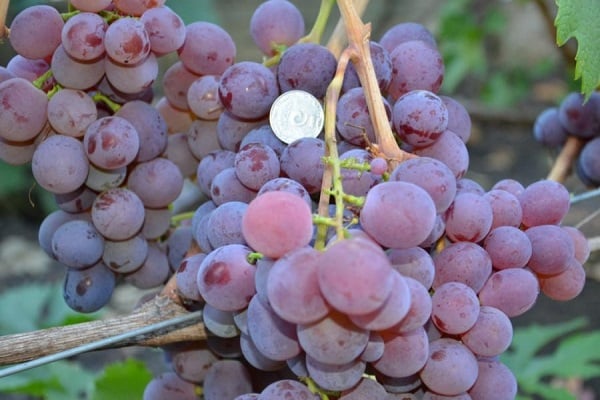
When can I plant
It is recommended to plant the Ruby Jubilee hybrid in early October and before the first autumn frosts. During the winter, the seedlings will have time to take root, and in the spring they will begin to actively grow. You can also plant grape bushes in the spring, after the snow melts and the onset of heat.
Description of actions: what for what
Stages of planting a seedling in open ground:
- Dig a hole with parameters 80 x 80 x 80.
- Drive a metal pipe into the bottom of the pit and another one next to it.
- Drainage is poured to the bottom, and then 150 g of potash fertilizers.
- Place the seedling in the hole and cover with soil.
- Tamp lightly near the trunk.
At the end of planting, pour plenty of warm water. Grape seedlings are not recommended to be planted next to other plants. It is undesirable to deepen the seedling, this will negatively affect the growth of the plant. If you plant only female varieties, then over time, the crop will shrink. Any pollinator variety is necessarily planted nearby.
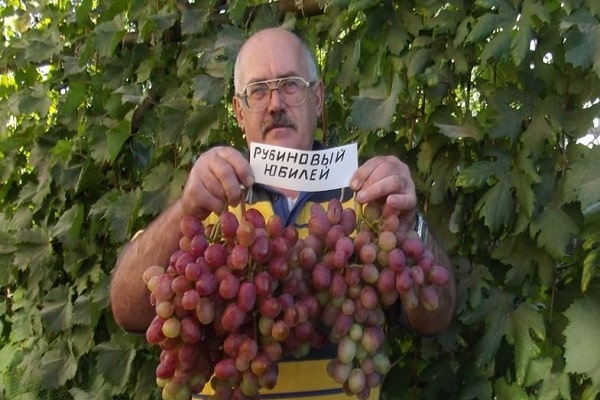
Features of growing and care
Without maintenance, the vine will grow worse and yield less yield. Timely application of fertilizers will increase the resistance of plants to diseases.
Pruning vines
In summer, stepchildren are mostly pruned. The main pruning is done in the fall. The procedure is aimed at increasing the yield. Pruning is carried out 2 weeks after harvest.
Stages of pruning vines:
- The vine is cut before the growth of living wood (when cut, the color of the vine should be light green);
- 2-3 cm of vines are left on a living bud.
In the summer, 2 strong shoots are left, and the rest is cut off. Several buds are left on each branch. The branches are spread apart. A year later, some of the branches are cut off. On each side, 2-3 branches are left with several shoots. In subsequent years, the branches are pruned so that the plant is not thickened.
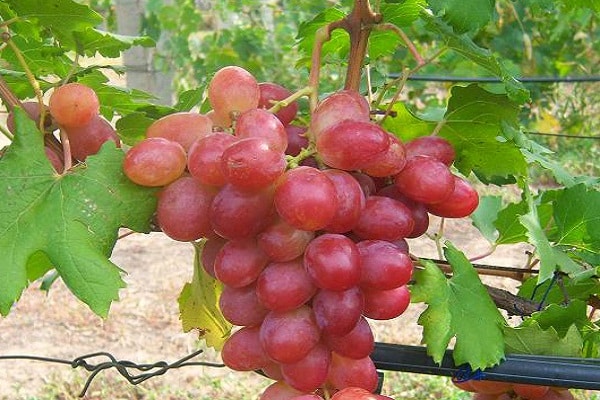
Irrigation
Vine bushes grow well without watering thanks to a powerful root system. In the spring, the bushes are watered with the onset of the growing season, when leaves and buds bloom.
In summer, the plant is watered while the grapes are being poured. Watering is not needed before and during flowering. Due to moisture, the inflorescences crumble. The last time the grapes are watered before the onset of cold weather, to prepare the plant for winter.
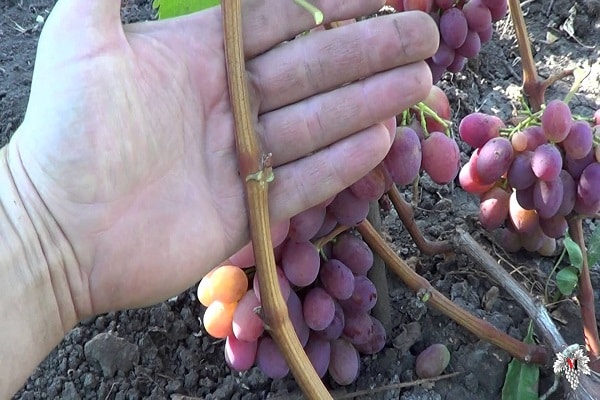
Fertilizer
The first feeding is carried out after the formation of ovaries. Nitrogen is introduced into the soil. The second time is a week before flowering. Organic matter, phosphorus or potassium is introduced into the soil. Foliar dressing is carried out 2-3 days before the blossoming of the inflorescences.
The second time the vine is sprayed with fertilizers 5 days after bud break. And the last time - 5 days after flowering.
Before the onset of cold weather, nitrogen, wood ash and mineral fertilizers are introduced into the soil. This will prepare the rhizome for winter.

Disease and pest control
Most often grapes are affected by powdery mildew and mildew. To fight diseases, both chemicals and folk remedies are used. An effective prophylactic agent against diseases - "Ridomil Gold". For the treatment of powdery mildew, use "Hom" or "Oxyhom". The drug "Abiga-Peak" and Bordeaux liquid help with anthracnose. Black spot is treated with copper-containing chemicals.
Of the insects on the bushes, there are felt mites, leafworms, scale insects and false scale insects. For insects, grapes are sprayed with preparations "Fufanon-Nova", "Inta-Vir", "Alatar". The leaf roll is fought with the help of Fitoverm. The chemicals "Akarin", "Kleschevit" help against ticks. The damaged parts of the plant are cut off and discarded.
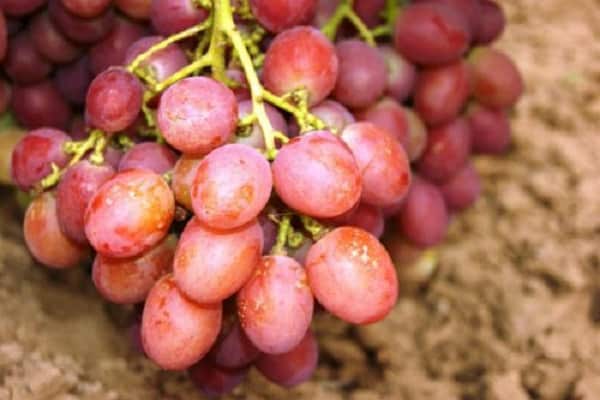
Harvest: collection and use
Harvested at the end of August. The bunches are cut with a sharp knife so as not to damage the branches. Store the bunches in a cool dark place. It is important to keep the bunches out of sunlight. This lowers the sugar levels in the grapes. Wine and compotes are made from the bunches, and they are also consumed fresh.
